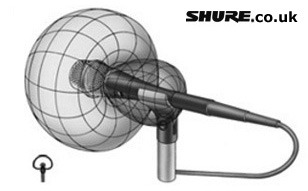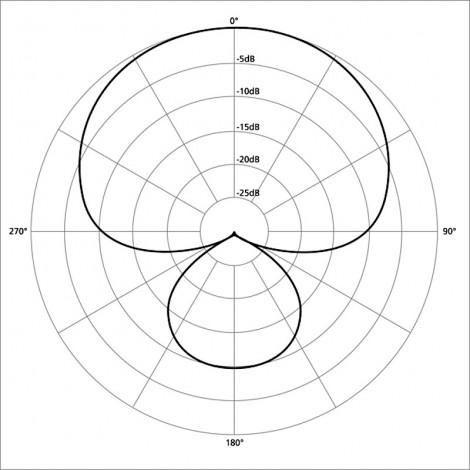You are currently viewing a course sample, but you’re not yet a member! Only certain modules will be available to you. To sign up for a membership to access the full course, check out our Plans and Pricing or Login
Microphone Patterns:
Before we can get into actual microphone techniques, we need to lay the groundwork for understanding microphone pickup patterns. Understanding how a microphone picks up sound at different points around the capsule will allow you to get the best sound out of the mic. In addition proper microphone placement can solve many tone, EQ, and feedback issues.
On-Axis and Off-Axis
If you’ve ever used a handheld microphone, you undoubtedly understand that with most mics, you actually have to point the mic at the source to get the best sound. If you point the mic away from the sound, you’re not going to pick up as much sound. Audio engineers have a technical term for this. It’s called on-axis and off-axis. Simply put, on axis is when the microphone is pointed directly at the source and off axis is when it’s pointed away from the source.
To get an idea of just how big of a difference this can make, take a listen to this recording made with two identical mics – one off-axis and one on-axis.
Microphone Patterns:
In order to help understand how microphone pick-up sound. We need to understand the individual types of microphone pickup patterns.
When you use a typical vocal microphone, you don’t talk into the back of it (duh!). You talk into the front. If you would try and talk into the back of it, it wouldn’t pick up nearly the same amount of sound. This is because the microphone is designed to reject sound that comes from the back of the microphone.
There are three basic types of pick-up patterns. The first is cardioid (or some variant on this pattern). Most of the microphones you interact with regularly have cardioid pick-up patterns. In order to illustrate a microphone pickup pattern, engineers draw graphs like this one.
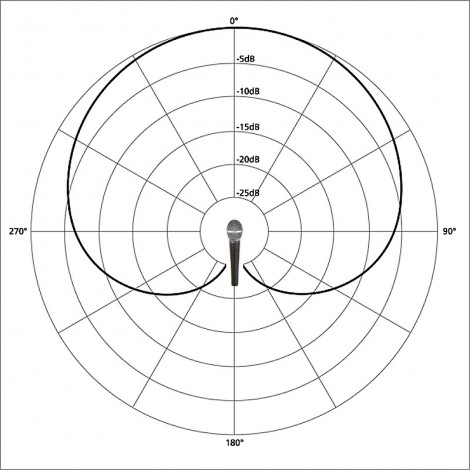
Image Courtesy of Harmony Central
This is an attempt to draw in 3D space a microphone pick up pattern that looks like this:

Image Courtesy of Shure UK
The bubble represented the areas where the microphone will pick up sound. For convenience, engineers typically flatten this graph into the 2D form seen in the first graph.
When a microphone is on-axis, it means that it’s in the sound source is within the pickup pattern. If something is off axis, it means that it’s outside of the pick-up pattern. Sometimes manufacturers claim their microphones have “great off axis rejection”. This means that the microphone doesn’t pickup sounds that are outside the pattern. This is extremely useful in live settings where you don’t want the microphone to pick up sounds it’s not pointed at. This allows great control over individual instruments in your mix.
Now that we have at least a basic understanding of pickup patterns let’s take a look at some of the most common.
Cardioid:
As we already mentioned, a cardioid is one of the standard pickup patterns. Cardioid patterned microphones reject sounds from behind the mic and pick up sounds from in front of the mic.
Cardioid microphones are especially helpful when you have loud floor monitors because they do not pick up the sound that from the floor monitors (which are on the floor behind the microphone), but do pick up the sound from the voice (or other instrument) directly in front of the microphone.
The name cardioid comes from the same root word as the word cardio (meaning related to the heart). A cardioid pattern looks a little bit like a heart shape, thus the name.

Image Courtesy of Harmony Central
Omnidirectional:
Another common type of microphone available is the omnidirectional microphone. Omnidirectional mics are designed to pick up sounds in every direction equally. Omnidirectional mics are most common on lapel mics as well as a few other types of live event microphones.
Omnidirectional mics do have some distinct advantages. One of the biggest advantages of omnidirectional mics is that they do not have to be pointed directly at the source to pick up sound. This is why a typical lapel mic can be pointed in any direction and still get good sound. Omnidirectional mics also typically have a more even frequency response than directional mics. This means that they don’t boost or cut any particular frequencies. Directional mics tend to overemphasize (boost) the low frequencies when something is too close and underemphasize (cut) the low frequencies when something is too far away. (This is know as the proximity effect.) Omnidirectional mics are far less susceptible to these problems.
Here is a 3D rendering of an omnidirectional pickup pattern.
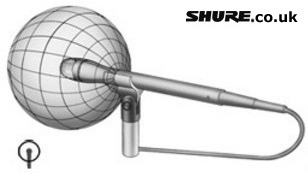
Image Courtesy of Shure UK
Here is a 2D representation of an omnidirectional pickup pattern. This diagram shows how signals from all directions are picked up equally.
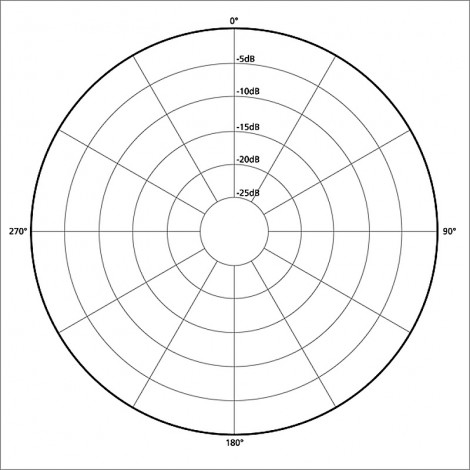
Image Courtesy of Harmony Central
Figure-8:
A much less common pattern in live sound is the figure-8 pattern. A figure-8 pattern is exactly what is sounds like. This pattern looks like an “8” meaning that it picks up sound from the front and back of the mic but it rejects sounds from the sides.
A 3D rendering of a figure-8 pickup patter looks like:
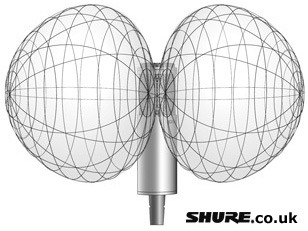
Image Courtesy of Shure UK
A chart of a figure-8 pattern looks like:
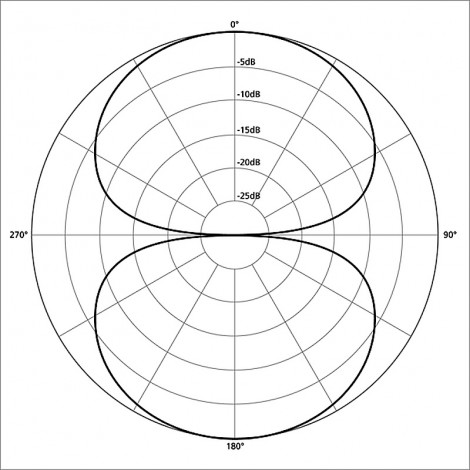
Image Courtesy of Harmony Central
HyperCardioid and SuperCardioid
Hyper and supercardioid mics have a response similar to a cardioid, but they have a smaller pickup pattern on the front. This means they have a better off-axis rejection. The microphone rejects sounds that are off to the side.
The downside of hyper and supercardioid mics is that because they have a tightened pattern on the front, they will pick-up a little bit of sound from directly behind the microphone.
Although this isn’t a huge problem most of the time, it can be problematic if you are in an environment with loud monitors on the stage.
Here is a 3D rendering of a SuperCardioid pickup pattern.
Image Courtesy of Shure UK
Here is a 2D graph of the pickup pattern:
Image Courtesy of Harmony Central
Conclusion:
Understanding microphone patterns will help you pick the right type of microphone for the job. Using the right mic pattern will mean far fewer headaches and allow you to get the best sound possible. In live sound, proper use of these patterns allows you to only pickup the sounds you want to hear while the microphone rejects sounds that you don’t want to hear. Proper pickup patterns will help you reduce noise and feedback, giving you a clean and tight mix.
[kkstarratings]
